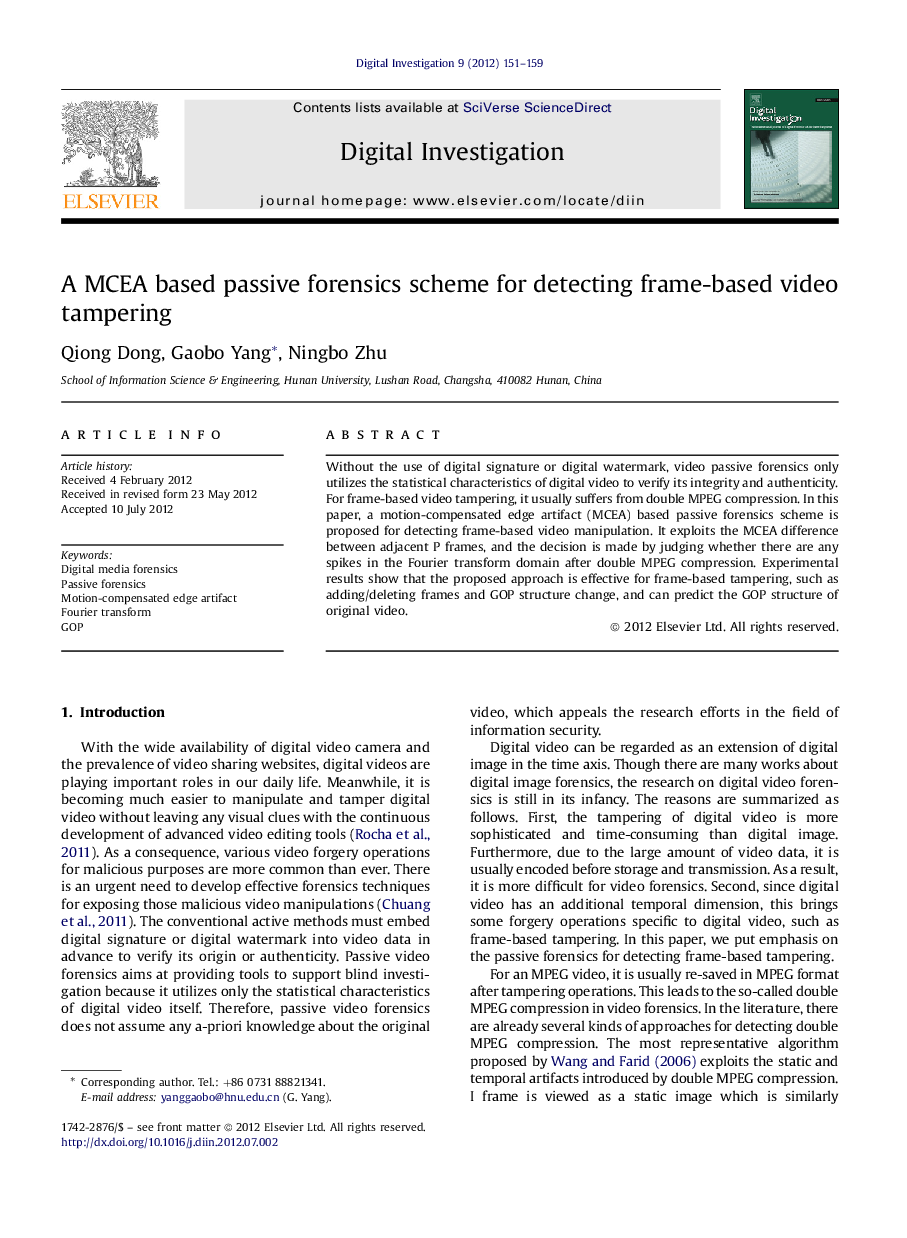| Article ID | Journal | Published Year | Pages | File Type |
|---|---|---|---|---|
| 457862 | Digital Investigation | 2012 | 9 Pages |
Without the use of digital signature or digital watermark, video passive forensics only utilizes the statistical characteristics of digital video to verify its integrity and authenticity. For frame-based video tampering, it usually suffers from double MPEG compression. In this paper, a motion-compensated edge artifact (MCEA) based passive forensics scheme is proposed for detecting frame-based video manipulation. It exploits the MCEA difference between adjacent P frames, and the decision is made by judging whether there are any spikes in the Fourier transform domain after double MPEG compression. Experimental results show that the proposed approach is effective for frame-based tampering, such as adding/deleting frames and GOP structure change, and can predict the GOP structure of original video.
